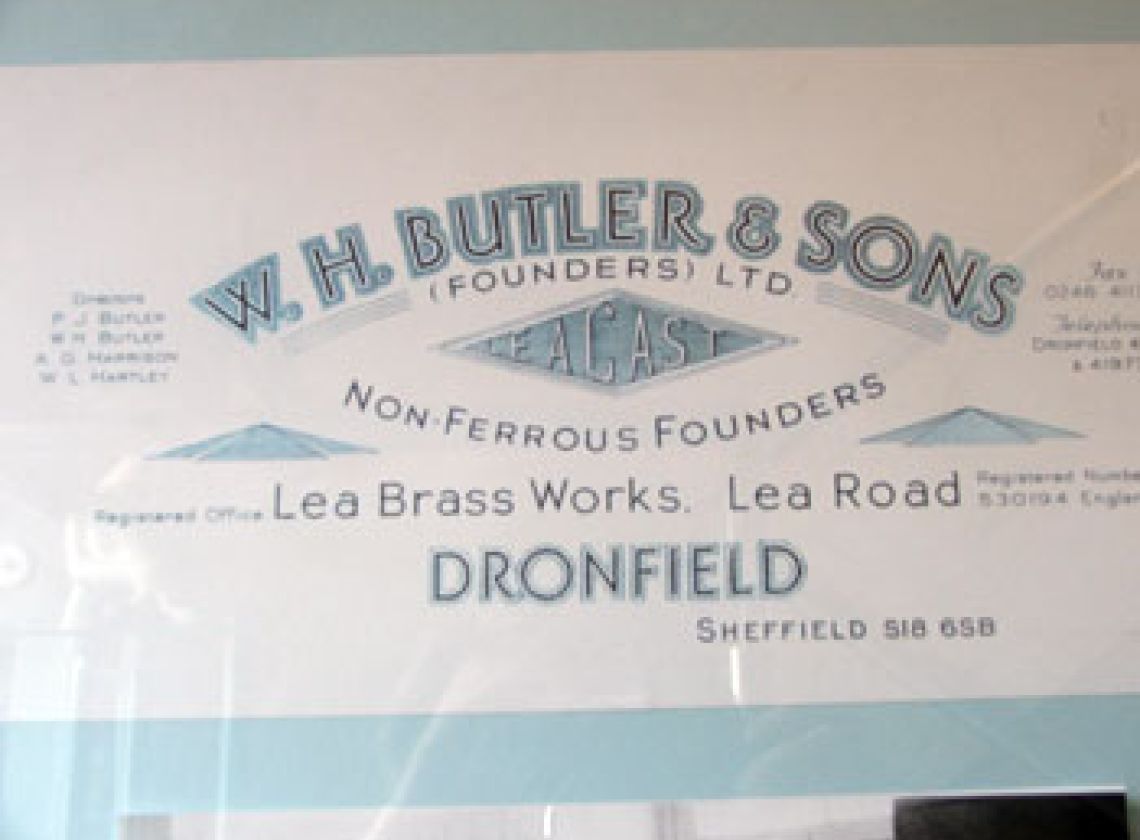History
Conversation with Peter Butler
William Herbert Butler, grandfather of Peter Butler, rented one building from the Midland Railway Company in 1923 and bought the stables in 1926. The four cottages on Shaw Lane (later renamed as part of Lead Road) were purchased in 1930. Phillip's shop and adjoining cottages plus the shop and houses on Church Street adjacent to the church yard were sold to Butler's in 1936-1938 for £1,000 by John Phillip's widow, Ellen, who now lived in Blackpool. William's two sons, Jack and Herbert, were now partners in the firm. William Herbert died in 1956, Jack died in 1976 and Herbert in 1978. Peter Butler and his cousin, Harvey, formed a family trust and expanded the firm to Whittington Moor in 1988, finally transferring the business therein 1998, after 75 years on the site at the corner of Church Street and Lea Road.
At first they worked with non-ferrous metals, casting brass ferrules for tools and had pit furnaces. In the early 1930s the cupola was constructed and they cast parts in iron for the textile machinery of the West Riding of Yorkshire. During the war they made noses for bombs in cast iron, aluminium parts for search lights and Bren gun bearings out of bronze. The men working there during the war were in reserved occupations and women were employed as core makers for casting in sand and continued afterwards. The core shop and stores being situated in the row of cottages on Lea Road.
After the war the textile industry was still a market for their products and in 1948 a steel-framed machine shop was constructed in the yard (now the glazed over cafe area). Butler's played their part in the export market sending sausage-filling machinery and brick-making presses to over 50 countries. They expanded into new premises in Callywhite Lane, where they had the machine shop and the Lea Road site became a total foundry. Though they had full hammer rights under the Foundry and Forges Act, they did not have a forge on the site. By 1991 they had completed the full circle and were working in non-ferrous metals, with which they began. The firm transferred to their other premises at Whittington Moor in 1998.
The corner shop became the office in the late 1930s and the furnishings were purchased from William Deacon's Bank on the corner of School Lance when they had a refit. The core shop was housed in the ground floor of the cottages and upstairs the rooms were used for storage of patterns and core boxes. Butler's also owned the cruck-constructed building across the road in Church Street, also used for storage.


Plan Your Visit
The Forge Shopping Centre is open
Monday - Saturday
10am - 5pm
The Forge Shopping Centre
Church St, Dronfield, S18 1QX
Find out more